Want to hear some grim statistics?
An author averages only 8-15 cents on every dollar made on their own book.
The “average” YouTuber with 5K views per month makes just $15/month.
Pretty depressing, isn't it?
But luckily there’s one piece of content out there that subscribers still value and will pay for, and that is an online course.
I’m talking about video courses on your blog.
When I Googled “average cost of an online course”, the first article from US news reports a student spending upward of $1,000.
You might be thinking, “Hey! But that’s for a college course!”...
And that’s exactly my point.
The verbiage around an “online course” brings up connotations of universities, higher education and exclusive knowledge. Globally (not just nationally) we value education, and we’re willing to pay for it.
This allows you to charge much more for your online course than you ever could for an ebook, blog or video series.
Here’s the other thing: if you already have a blog, podcast or video series, then that content can be easily repurposed into a course and start generating income in 30 days.
How?
Well, I’m going to walk you through the tried-and-true method of creating a profitable online course that I’ve seen work time and time again. It’s been distilled from watching over 15,000 course creators launch their course and tweaked using the exclusive data we have at Teachable.
It’s foolproof, and it’s fast.
8 Steps for Creating a Profitable Online Course
1. Find Your Profitable Course Idea
It all starts with an idea, right?
And, as any online entrepreneur knows, the best ideas and the ones worth paying for solve an audience pain point.
Since many of you already have audiences and websites, you've got to listen to your audience.
- Is there a common question that is coming up in emails or comments?
- Is there a specific place where they’re failing or requesting help?
Your website may cover a wide range of topics, but get specific in pinpointing the pain points.
For example, Pat Flynn recently launched a book Will It Fly: How to Test Your Next Business Idea So You Don't Waste Your Time and Money because, according to Pat:
“...[T]he #1 question I’ve received, both via email and in voicemails for AskPat, is how do I know if what I’m working on will pay off? After eight years of helping entrepreneurs start and improve their businesses, I have literally worked with entrepreneurs on thousands of ideas. I can say with confidence that this is the book new entrepreneurs need most.”
Pat is addressing his audience’s pain points and as a result, his book made it to the top of the Wall Street Journal Best Seller List in just 9 days.
To validate your own idea, you can use the 80/20 validation method, read Pat’s book, or, my favorite, poll people in your welcome email.
In your welcome email, ask people to share the “one thing they’re struggling with right now.”
I personally use this tactic in the Teachable blog’s welcome email:
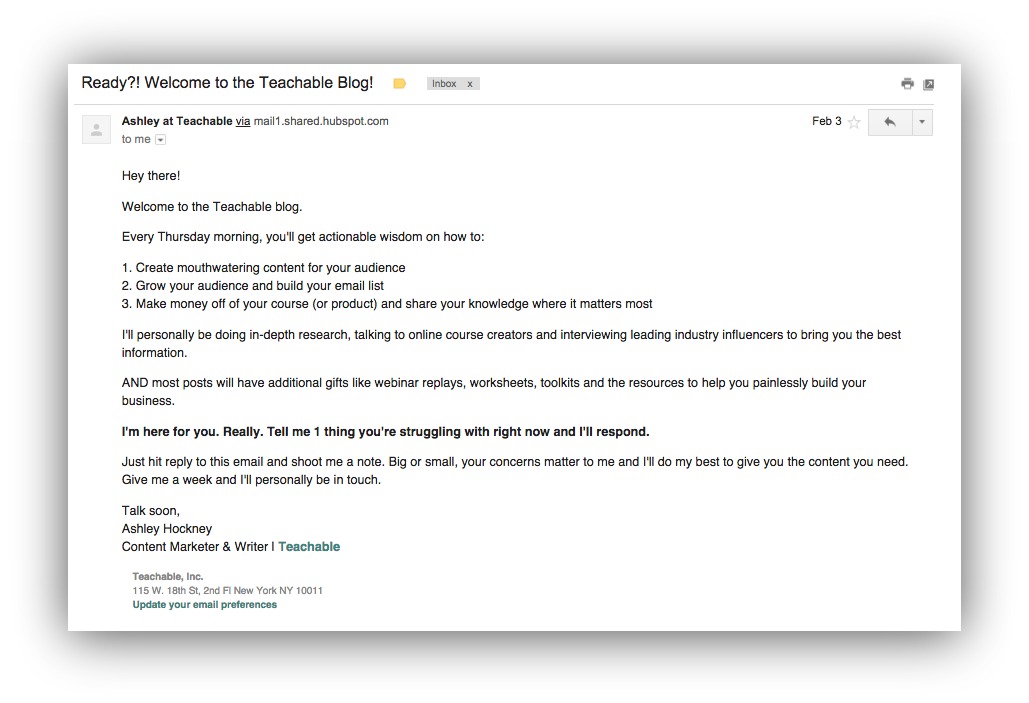
Once you have the answers...
2. Develop a content upgrade to start growing your email list
If you’re already attempting to make money online, you’ve probably realized that “Building an email list should be your number one priority. Period.”
Your email list is the list of people you have direct access to sell to and the bigger your list, the more people to sell to, the more potential sales with the same conversion rate.
The best way to grow this is to use a content upgrade that attracts your target audience and captures email addresses.
Here are a few examples:
Include content upgrades in your blog posts: Give readers the option to download valuable content upgrades (like webinar replays, checklists or ebooks) in exchange for an email address using the “10 minute content upgrade” method.
As an upgrade to your landing page: You can use a Welcome Mat on your website or course that prompts readers to download a content upgrade before they ever look at your priced offer.
It’s pretty easy to get someone to give you an email in exchange for a free quality content as a way to warm them up to your full-priced course.
Here’s how Tommy Griffith of ClickMinded does it.
Create a workbook: People love workbooks. They’re engaging, beautiful and provide extremely high value for free.
I’ve used them as a read along with our live webinar trainings.
Pro tip: include a call-to-action within the workbook for readers to take a photo and post to social media. It’s basically a way for you to design beautiful organically sourced Tweets.
Here’s what ours looks like and please feel free to download it.
Create an Email Course: A free email course is exactly what it sounds like. It's a series of lessons, typically written out, and delivered by email dripped out over a period of 1-2 weeks.
Email courses are perfect for full courses because they give students a very real sneak peak into what your course content will look like, your voice and what they’ll learn.
Any traffic that comes in from a email course tends to be extremely warm and converts well.
A fantastic example of an ecourse is Nat Eliason and Justin Mares’ Programming for Marketers email course that’s a lead magnet for their course Become a Technical Marketer:
3. Set Your Pricing Goals
Want to know the easiest way to make more money on your online course? Charge more.
If it sounds simple, that’s because it is. Brennan Dunn, founder of Double Your Freelancing, frequently discusses the importance of value-based pricing. Put simply, this means pricing your course based on its value of outcomes not based on your time or what’s “normal” for a course or online product.
You can also anchor your price by creating multiple pricing tiers. Check out Laura Belgray of The Talking Shrimp’s pricing structure. $350 to edit a blog post sound exorbitant on its own, but when set against a $3,500 daily rate, it sounds like a steal.
When it comes to financial modeling around your course, use the formula below:

If you already have an email list, multiply the number of subscribers by .02 (the standard conversion rate we’ve seen on course launch emails) to figure out how many sales you can expect. Use this number to set your course price to meet your revenue goal.
While you may have seen courses listed for under $10 - $20 dollars, I personally always suggest pricing your course at $100 minimum.
At this price point, you only need to sell 10 courses to make $1000 dollars. Something very possible considering there are 3.17 BILLION people on the internet.
Also, notice that this formula includes multiple variables. Maybe you can increase your conversion rate from .02 by changing your call-to-action text, growing your email list, or offering bonus content in your course for higher pricing tiers (such as consulting such as group trainings).
4. Create Your First Course Section, but DO NOT CREATE ALL CONTENT
Okay - I’m going to drop a bit of a bomb on you…
You’re going to start selling your course with just one small fraction of your course finished.
Remember how we talked about validating your idea? This is part of it. You want to sell a “minimum viable product”, or “MVP”.
Detailed here, the idea behind a minimum viable product is that “many projects fail badly because they do Big Bang delivery (build the thing until 100% done and deliver at the end)”.
Instead of creating your entire course at once where you devote hours of time to produce a product you’re not sure people will like, release part of your course that allows you to get customer feedback, while also delivering a minimally viable problem solver.
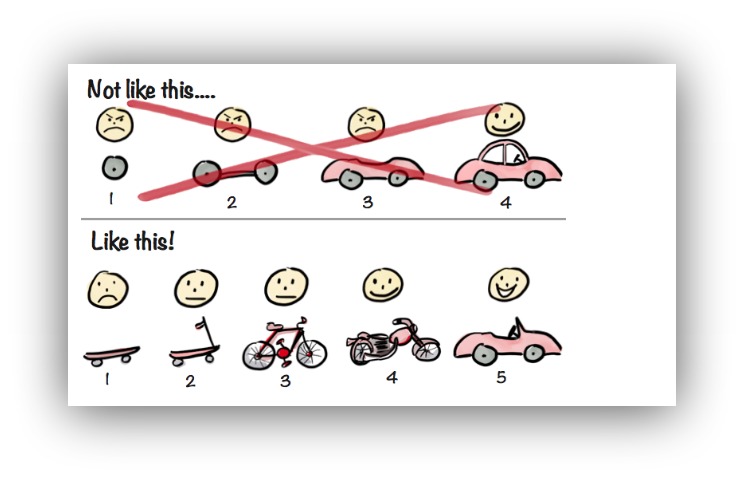
Doing this with a course allows you to get feedback on your first course section that may help you figure out what to do as you create the remaining content.
Maybe your lighting is off or your mic not loud enough. Maybe your topic needs to be more specific - this is the way to find out.
Here’s how to launch your MVP course:
- Create a rough outline for your course. A course provides a transformation to students. What are the steps someone must take to get to your outcome? Imagine you’re writing a “How-To” essay. Pick 6-12 large steps.
- Each one of these steps becomes a course section.
- Create Lectures Within Sections. Within your course sections, we suggest 5-10 lectures or smaller steps to take you from one point to the next. Check out how we did it within our course, The Profitable Teacher.
- Create the Content. Within each course lecture we suggest uploading 1 video, a text block with additional explanation and possibly a PDF of additional resources.
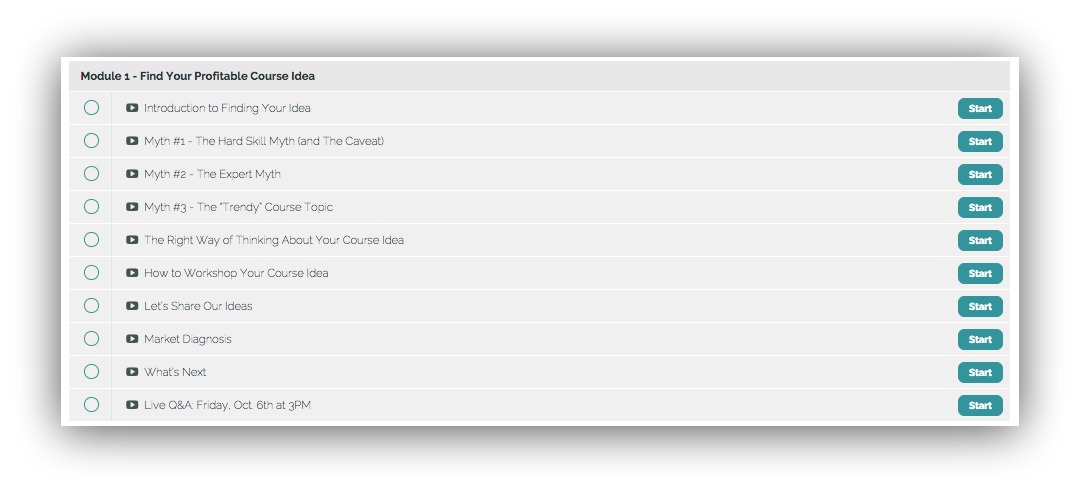
Here’s the inside of the course lecture for Module 1, Lecture 1.
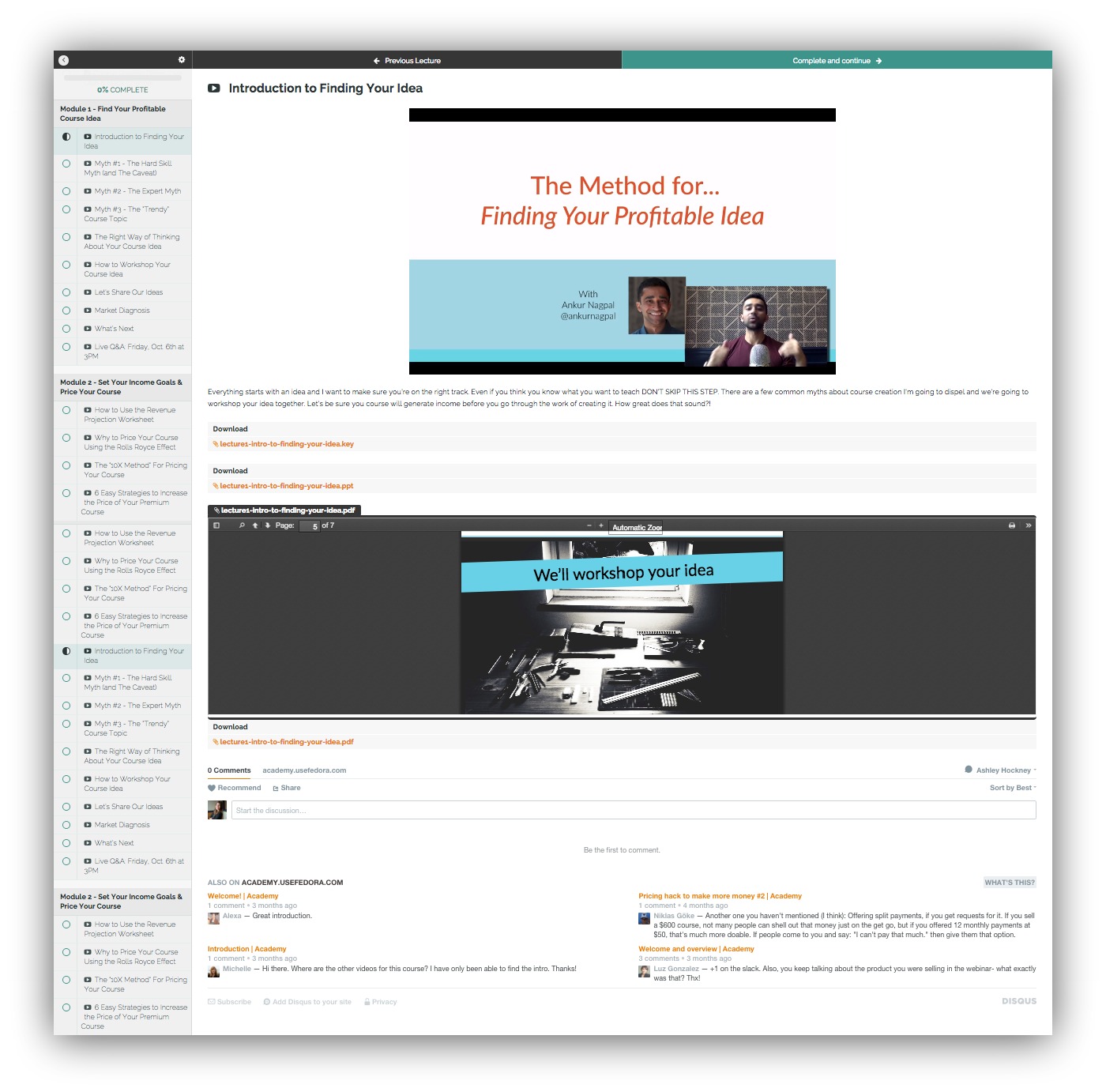
For your first module, your goal is to get students excited to be in your course. Take this formula as an example.
Lecture 1: Introduce yourself + detail who the course is for + outline content covered. Use a talking head video. They’re excellent for conveying emotion and generating excitement.
Lecture 2: Get people excited and prepared. Show them where they can find additional resources. Give away a resource guide in a PDF or include links in a text block within your course.
Lecture 3: Start teaching with a small achievable task. Use slides, or a screencast to explain this content. Our favorite technology is Screenflow that makes it easy to record slides with a talking head videos in the bottom right-hand corner. Screenflow works with Mac, but you can use Camtasia for PC.
Lecture 4: Detail how to complete this task using additional video and text content. Add additional lectures if needed.
Lecture 5: Highlight how this lesson is the basis for the rest of the course. Since you’re summarizing, you can use talking head video or slides.
Lecture 6: Get students to interact with each other by posing an open-ended question in this course lecture. To do this, enable course comments.
For example, was asked students to share their course idea and had 66 comments in the course.
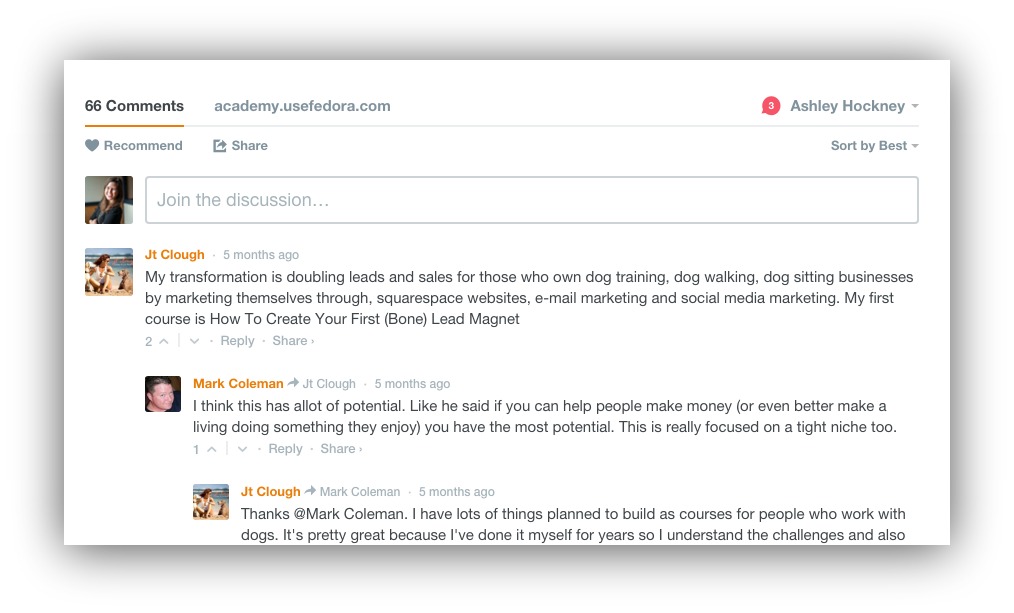
Within that formula for your first course section you want to do three big things. 1. Set expectations 2. Get students to an early win generating excitement and proving the value of your course 3. Set up a community
As you continue creating content in your course, we recommend including videos, screencasts, PDFs and text blocks to facilitate learning. If you need additional resources on creating these types of course content, our Teachable blog is chock full of it.
5. Create A Course Landing Page That Will Sell Itself
Once you have one section created, it’s time to presell your course.
All you need is a course landing page, also called a sales page. This should include 6 key elements: title, subtitle, social proof, course description, author bio, and FAQs.
Title: A good title should convey the general sense of what your course is about and catch the attention of your target audience.
Does your audience refers to a female executive as a “boss babe”? Or a would they say “female entrepreneurs”? Or maybe something more flirty like “mama with the money.” This all depends on metrics like age, income, gender and audience personality.
To get a grasp on who your audience is, use Dan Kennedy’s audience analysis found in The Ultimate Sales Letter.
Mariah Coz’s course Webinar Rockstar is a perfect example of a catch title and powerful subtitle:
Subtitle: Your course subtitle is arguably more important than the title because it should clearly define what students are getting from your course. This is your value proposition, your promise, the transformation provided. This line will sell your course.
Enroll Button: Everything on your course landing page should direct people to your enroll button. This is the button someone must click to purchase your course. Make it pop with bright colors.
Here’s what our enroll buttons looks like for our Teachable course, The Profitable Teacher.
Social Proof: Use testimonials from previous subscribers to prove to potential buyers that you’re a trustworthy authority on your topic. Since this is your first time launching a course, you can use a testimonial from a previous product as long as you’re clear where it came from.
As soon as you beta launch your course - be sure to get updated testimonials.
Melyssa Griffin’s course Pinfinite Growth has perfect testimonials.
Course Description: Since your course is not a physical product - show and tell people what they’ll be getting in the course description.
Your course description should lead with a hook up front, say what the course is, convey the benefits of taking it, and end with a bit of background on the course that gives validity.
Caleb Wojcik’s course DIY Video Production Guide’s description:
Author Bio: While you don’t have to be an expert to create an online course, you do want to convey what authority and knowledge you do have and tell people why you know what you’re talking about and why they should trust you. A quick 3-4 sentence bio will do just that.
Check out this example from XOSarah and her course An XO Sarah Guide to Photoshop.
FAQs: This is where technical and logistic questions come in. Answer anticipated questions here to set expectations and avoid negative or confused feedback.
Tell people what happens when they click your enroll button. Tell them about a money back guarantee (which we recommend giving). Let them know how you’ll be answering their questions.
I pulled this example from Jon Haw’s course on the NRSNG Academy
At Teachable, it’s our belief that you should be able to create a beautiful sales page in minutes by simply entering the basic and essential pieces of a course landing page.
6. Presell to Your Beta Testers
Now that you have a sales page, you’re going to presell your course. You do this by inviting a select group of students to beta test your course at a discount, in exchange for their feedback. This method allows you to improve your course content before your actual launch and collect testimonials.
And sure - you can deviate at this point and sell your content as is, but it’s risky. If you didn’t meet audience pain points, or if you repeatedly made a mistake in your content creation (like having a poor mic), you’re going to get negative feedback. If you’re looking for repeat customers, to build a business, or want to launch a second course, do NOT launch without preselling.
So, how to presell to beta testers? Reach out to your most engaged audience members - your “sneezers” (if you’ve read anything by Seth Godin).
You can find them by:
- Contacting the last 10-20 people who have commented on your blog and emailing them personally to ask if they want to beta-test your course
- Emailing your sales page to the segment of people who opened your last newsletter
- Including a CTA to sign up for your course within a blog post
- Leaving a sales message in an existing community you’ve built like a Facebook or Slack group
- Email the attendees of a recent webinar you hosted
- Post to your own social networks
- Post in a relevant subreddit you’re active in
Point being, find engaged members of your audience and put your sales page in front of them.
When we beta launched The Profitable Teacher to our audience, this is the email I sent to our blog newsletter. These people are readers who love our content, read it and have gotten free valuable blog posts every week for months:
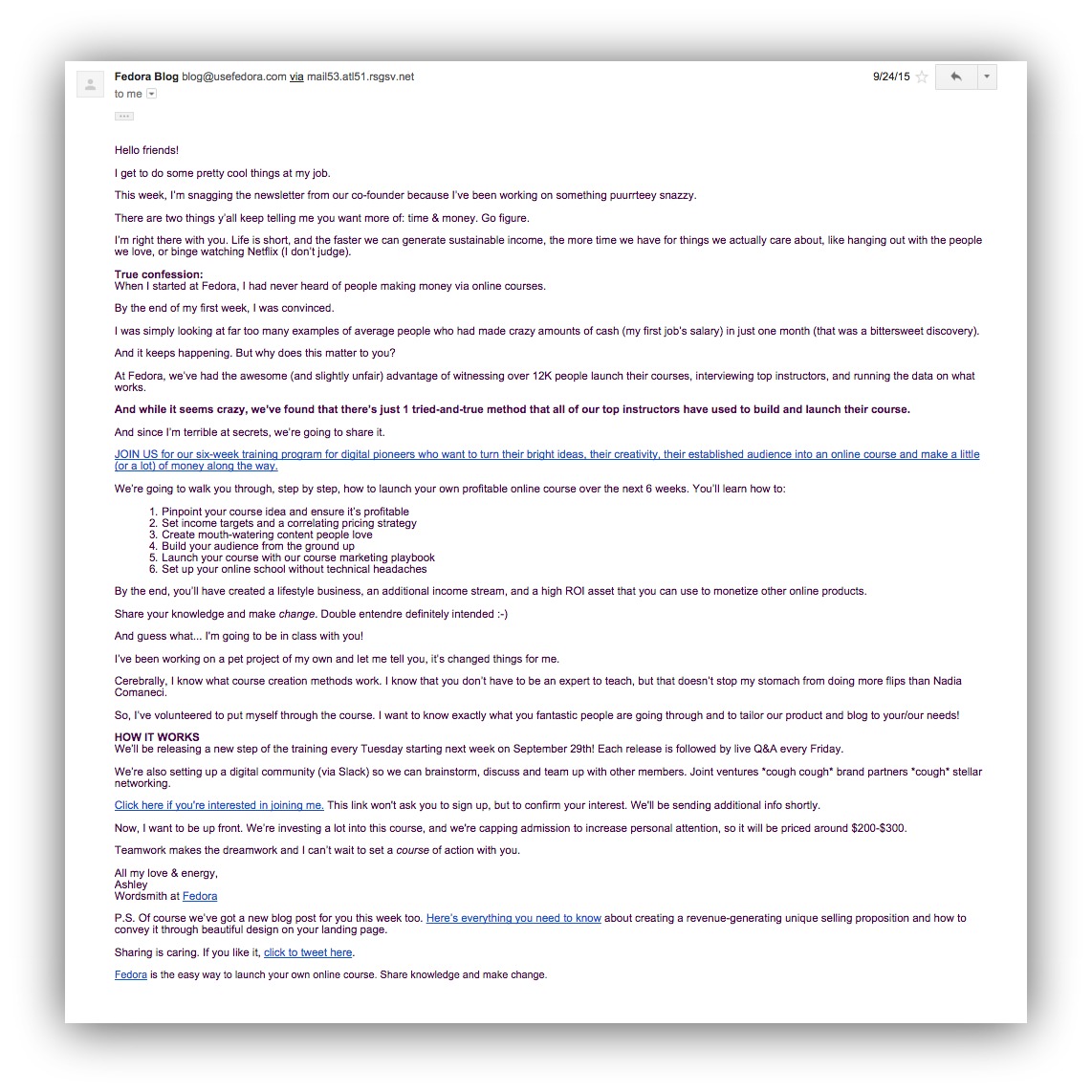
Over 50 people bought our course from this one email.
Important: Do NOT give your course away for free. There are two main reasons why. One, charging for your online course boosts student engagement, which is necessary for you to get feedback. Two, the income allows you to buy equipment you may need to boost course quality and, let’s be honest, increases your motivation to create a stellar course.
7. Release One Course Section Per Week
Once beta-testers are in your course, release one course section per week. By emailing your list every week to announce a new section, you keep engagement up. It’s also psychology important to have a weekly deadline for creating content. There’s nothing like the fear of angry customers to do just that.
You can also offer a Q&A through Zoom.us once a week. This is a great way to batch valuable consulting. Offering a bonus like this let’s you charge more for your course while giving you the opportunity to get raw feedback and interact with your audience.
Here is a copy of the email we sent every week to invite people to a group Q&A.
Remember, the whole point of the presale is to collect information to make your course better. You can collect information the following ways:
1. Copy and paste all comments about your course into a spreadsheet. Collect them from your course comments, emails and online community. Divide them by fixable & personal problems. Do you see repeating issues? Update your course.
2. Send a survey to enrolled students. Here’s what ours looked like:
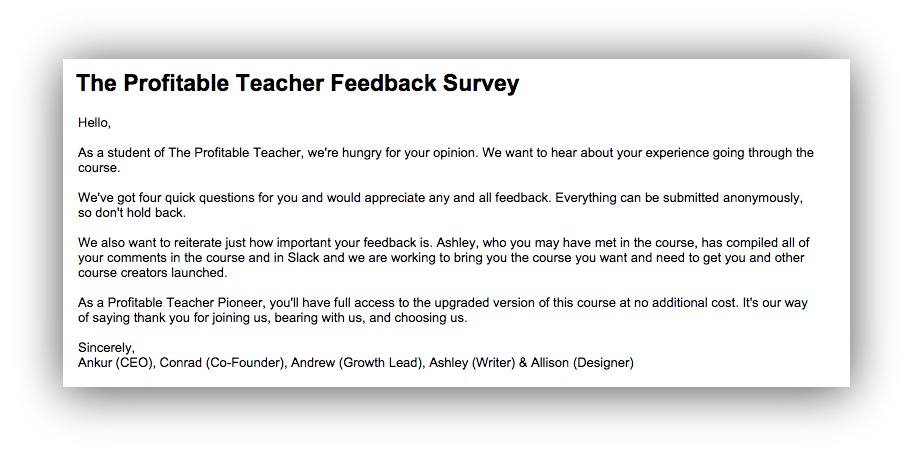
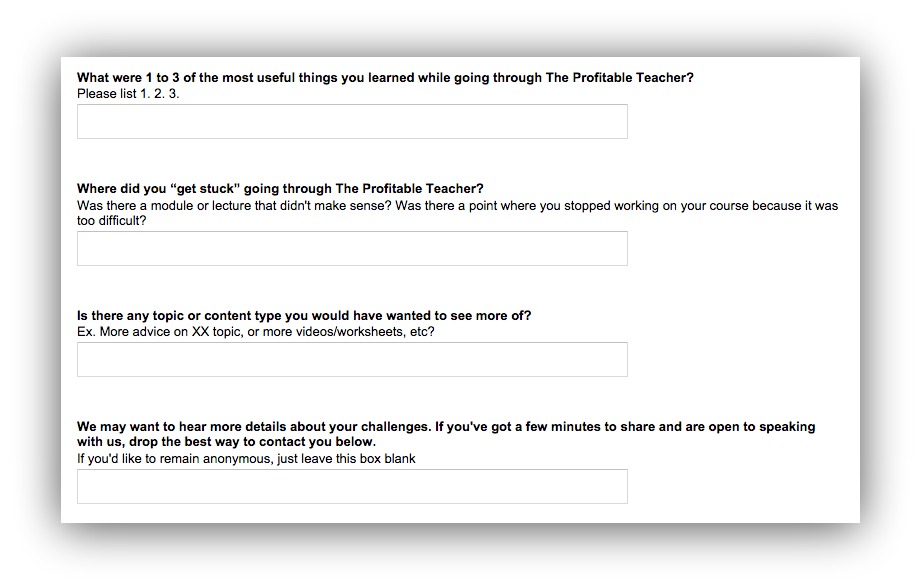
3. Analyze the data. With a platform like Teachable, you can see how much of a video was viewed and how much of your course individual students complete. Look for areas of drop off and amend. This could mean making your videos shorter, engaging students with questions or simply generating excitement in your voice.
4. Consider if you’re over promising. Are you delivering on what you advertised? Are you taking students to a transformation? Sometimes there’s a misalignment of expectations and product. Maybe this calls for an update on your sales page or maybe it calls for creating different content.
8. Fully Launch Your Course
After aggregating feedback and updating your course, it’s time to launch your course at full price. The best way we’ve found to do this is with a high-converting email sequence.

While you’re the best judge of your audience, consider a sequence similar to Jeff Walker’s. Every email includes a link to buy your course but addresses a different kind of psychological barrier.
- Anticipation Email - An email about your new course and what it is that generates excitement.
- Anticipation Email - Another email building excitement. You can include a video or personal story to humanize your launch.
- Common Questions - Answer questions potential students have that may prevent them from buying
- Urgency Email - This email starts to build a sense of urgency. You could also offer a bonus for students who buy now rather than later.
- Course Close - Another urgency email giving a 24 hour course close warning.
- Last Call - Just what is sounds like.
If you’d like example emails from a full launch sequence, you can download our Ultimate Email Example Guide that includes example launch email sequences from Laura Belgray (who is currently launching Marie Forleo’s B-School) and Amy Hoy, who teaches a course on launching.
While your launch sequence will likely drive a good number of sales, there are a few easy and actionable ways to make additional sales. Here’s a list of my favorite quickies to get you going.
1. Deal Websites
An easy way to put your course in front of interested buyers is to list it on a deals website. A deals website is basically a marketplace giving deals on products. It takes very little time for you to list your course and you’re immediately tapping into an existing audience that’s ready to buy.
- Stacksocial
- Groupon
- Living Social
- Bitsdujour
- AppSumo
- Fatwallet
- Wowcher
- Wahanda
- Dealtastic
- MightyDeals
- HotDeals
- SlickDeals (you need an account in good standing, but if you can generate this, the forum has great traffic)
- Ozbargain
2. Post on Product Hunt
Product Hunt curates the best new tech products and serves as a marketplace for product-loving enthusiasts, which means they’re perfect for your course. They differ from discount websites because you can sell your course at full-price.
3. Email Your LinkedIn Connections
While constant notifications can be annoying on LinkedIn, it’s very easy to generate a large number of connections of vaguely related business professionals who have more spending power than your average person on Facebook.
It’s surprisingly simple to export all of your connections’ email addresses to one list. You can then easily email them with your course offer. This is especially effective if your course has a business focus.
4. Host a Joint Venture or Partnership
A joint venture is an incredibly easy way to make connections with influencers, get yourself in front of their audience and exchange value between yourself and your partner. Think about guest posting, hosting joint webinars, creating affiliates or speaking at events.
There are 8 types of joint ventures we’ve experimented with and every single one of them have been successful.
5. Link to Your Course in Your Signatures
This is a very simple very quick way to generate a marginal amount of traffic to your online course. Make sure you add your course to all of your online bios on Twitter, Instagram, Facebook, etc.. A few hundred emails a week, a few dozen Twitter views a day. It can’t hurt!
6. Create Content About Your Course
We’re not going to tell you to start writing a blog to promote your course. Blogging is a good tactic for top-funnel lead generation, but it takes a lot of time, effort and readers are far from purchasing your product.
Rather, if you have one customer success story, an anecdote for why you created a course, or a technical tip that made it easier, write a 800 -1,000 word guest post with a call-to-action to enroll in your course. You can also craft videos or podcasts if you prefer it to writing.
Once your content is created, pitch it to interested outlets.
Here are a few places that are self-publishing (ideal for written content):
- Medium
- Inbound
- GrowthHackers
- HackerNews
- Trade outlets: If my course is on cake decorating, I might send my story to Food52, Delish, Eater, The Daily Meal and then smaller cake decorating blogs.
This is a method that was used by Tee Patterson who teaches a relationship course when she made her first course sale.
From launch, you have the opportunity to grow your online course business into passive income, a lifestyle business or full-time income.
I’ve personally seen all three options come to life and online instructors become successful whether they’re teaching watercolor painting or programming.
Let me know in the comments below: do you have online courses? If not, do you plan on creating one?

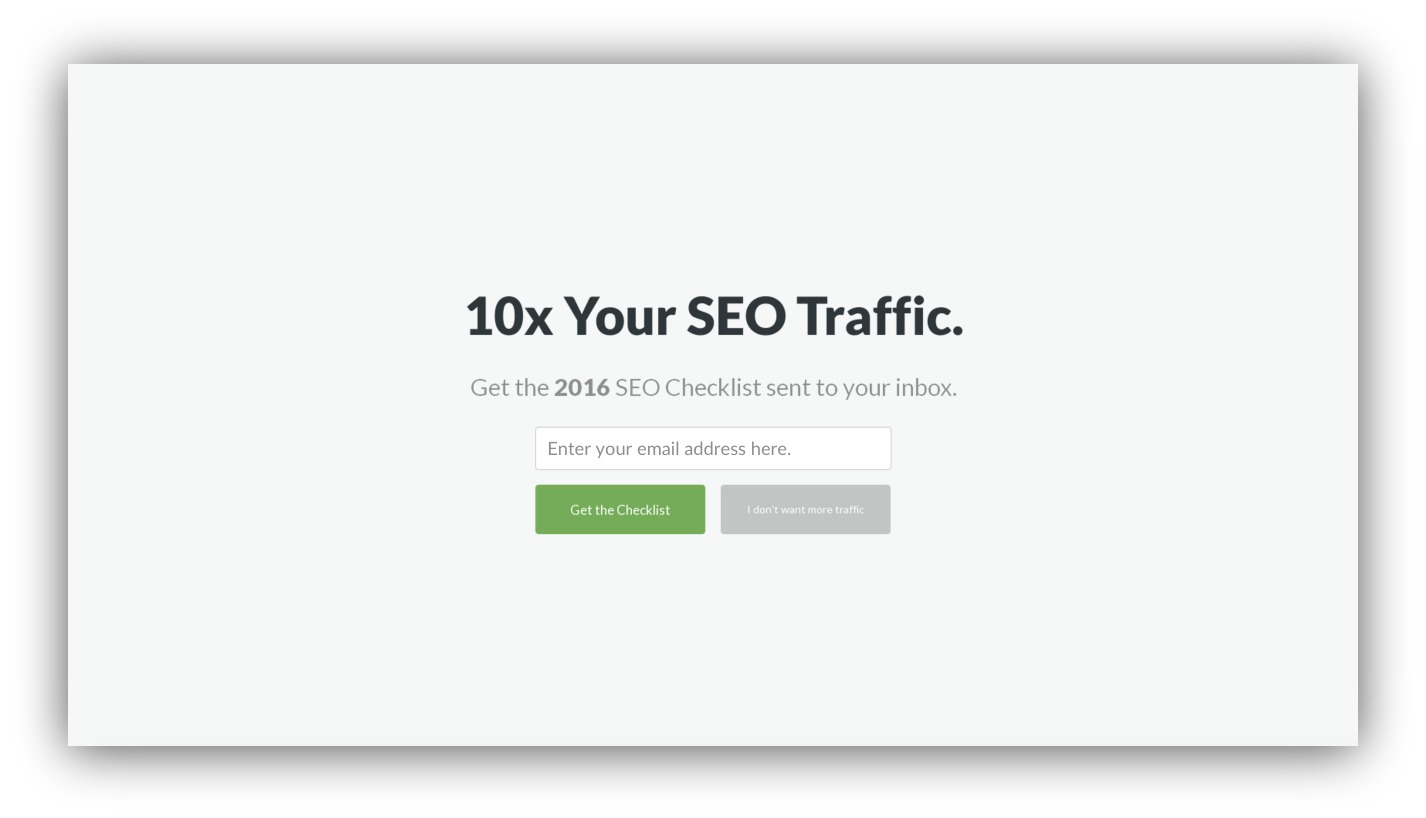
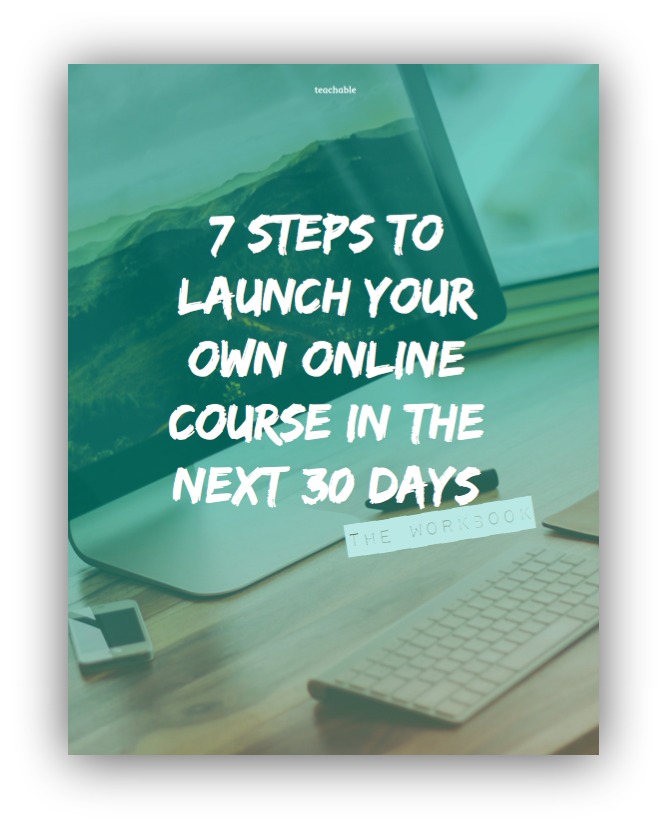
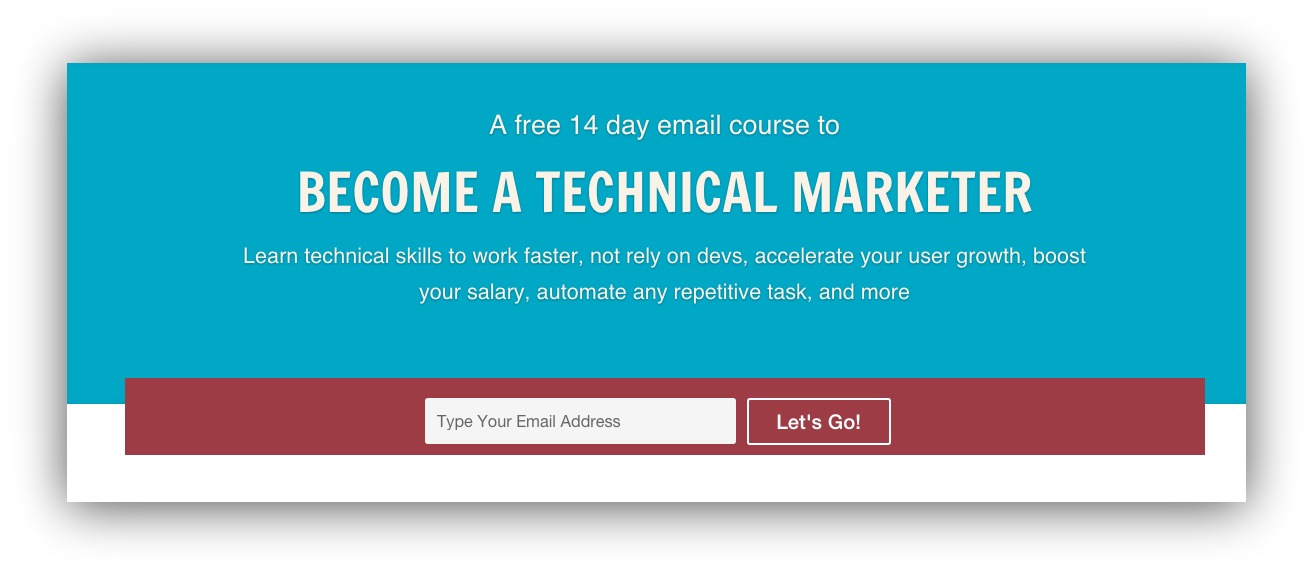
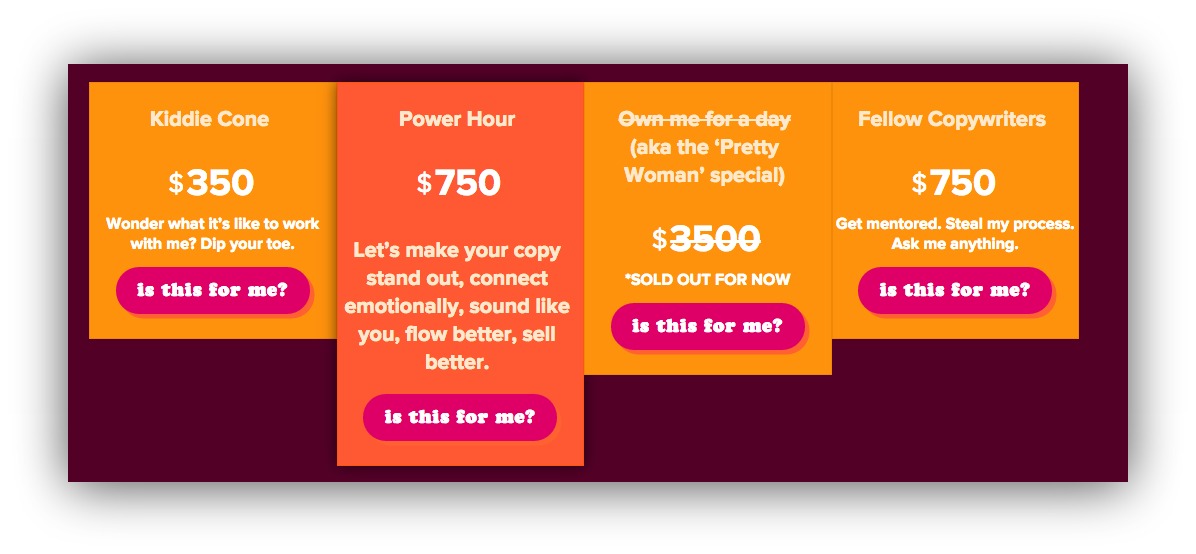
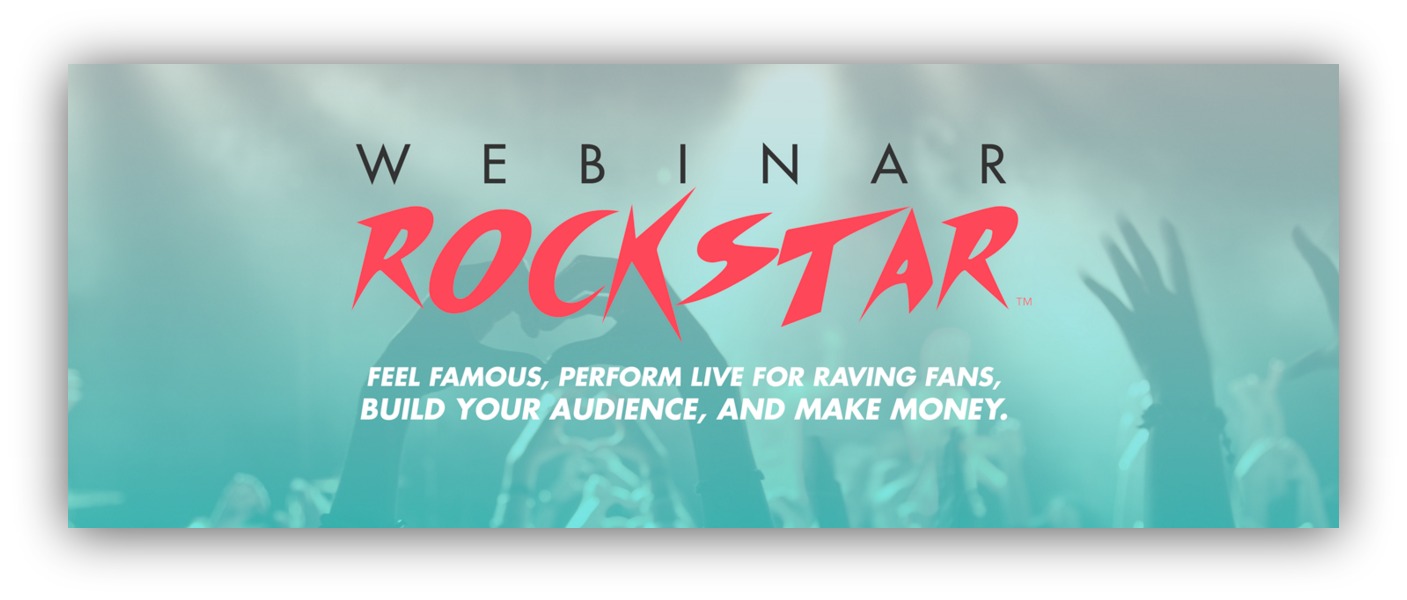

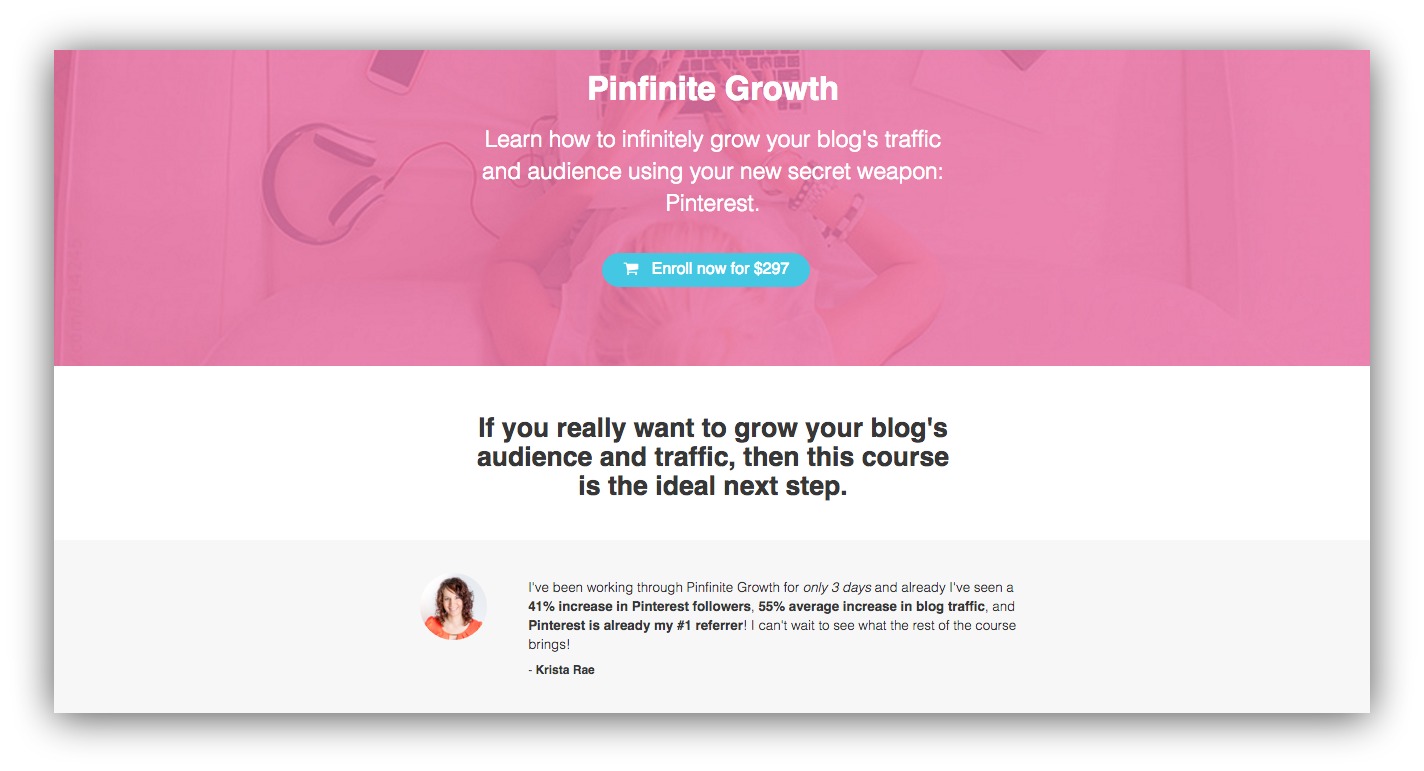
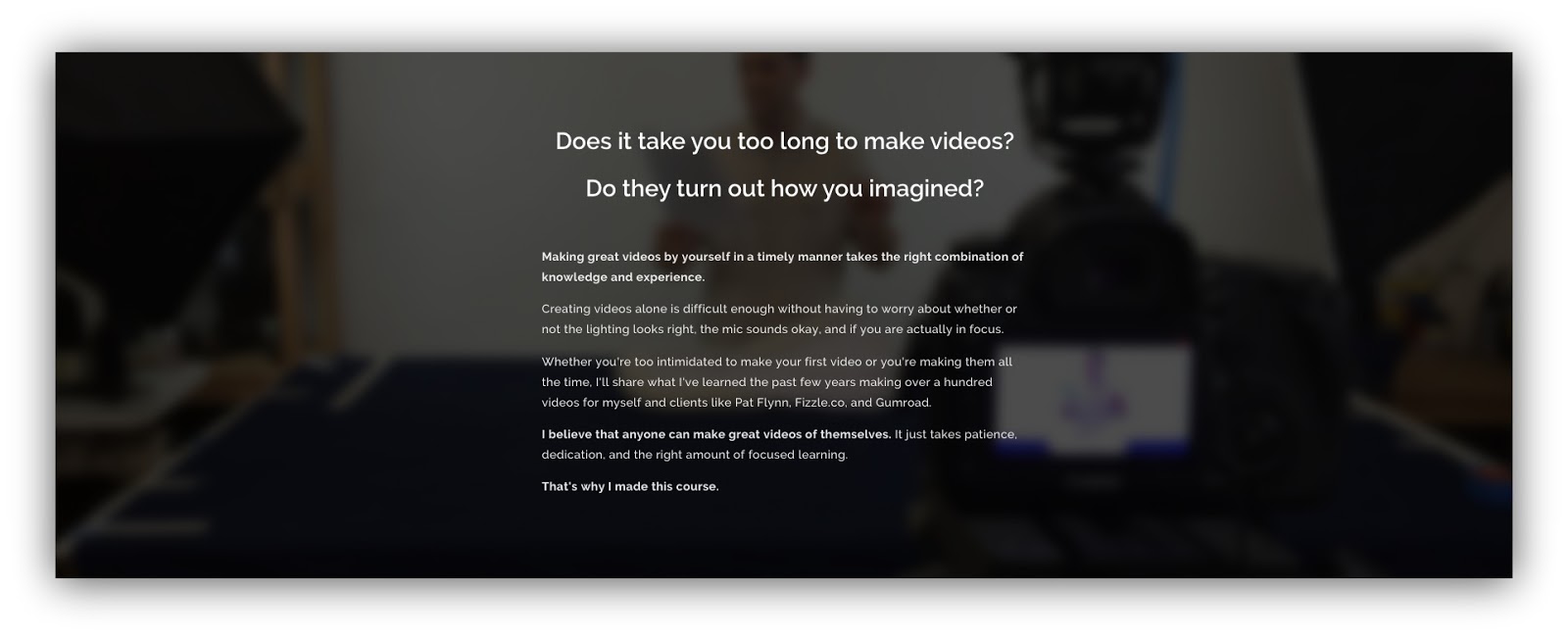
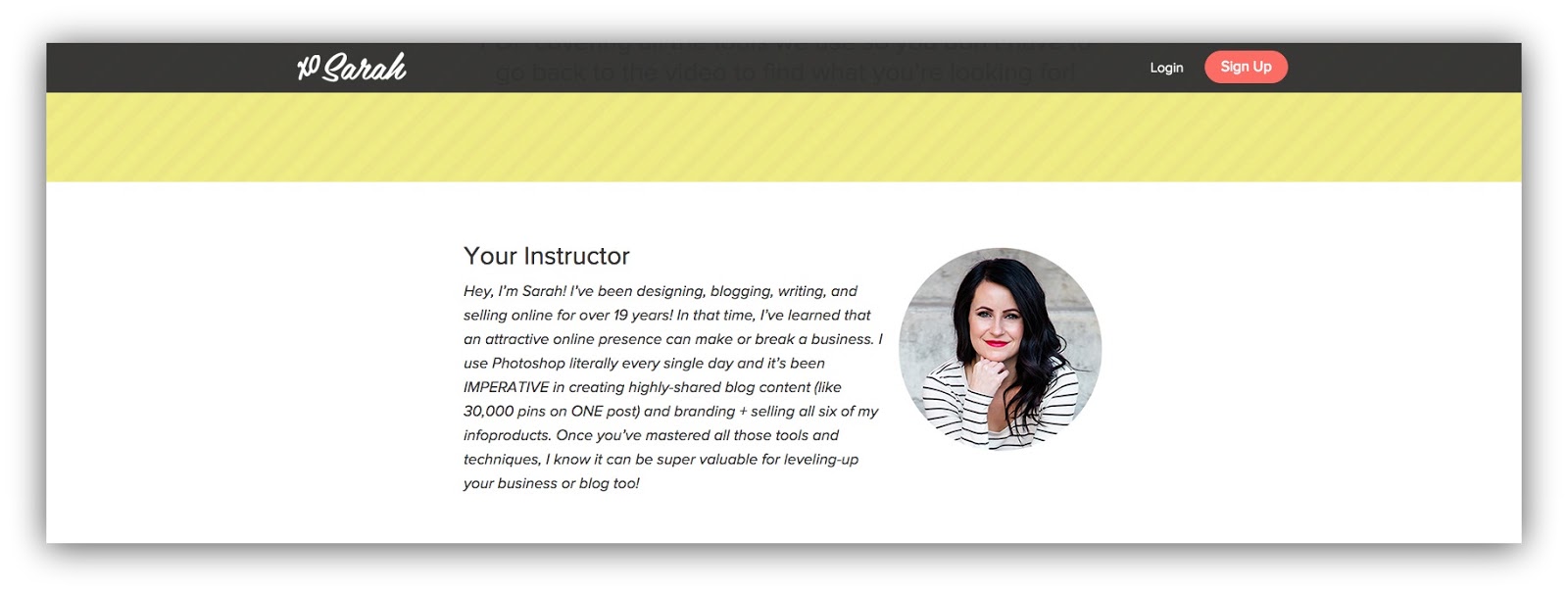
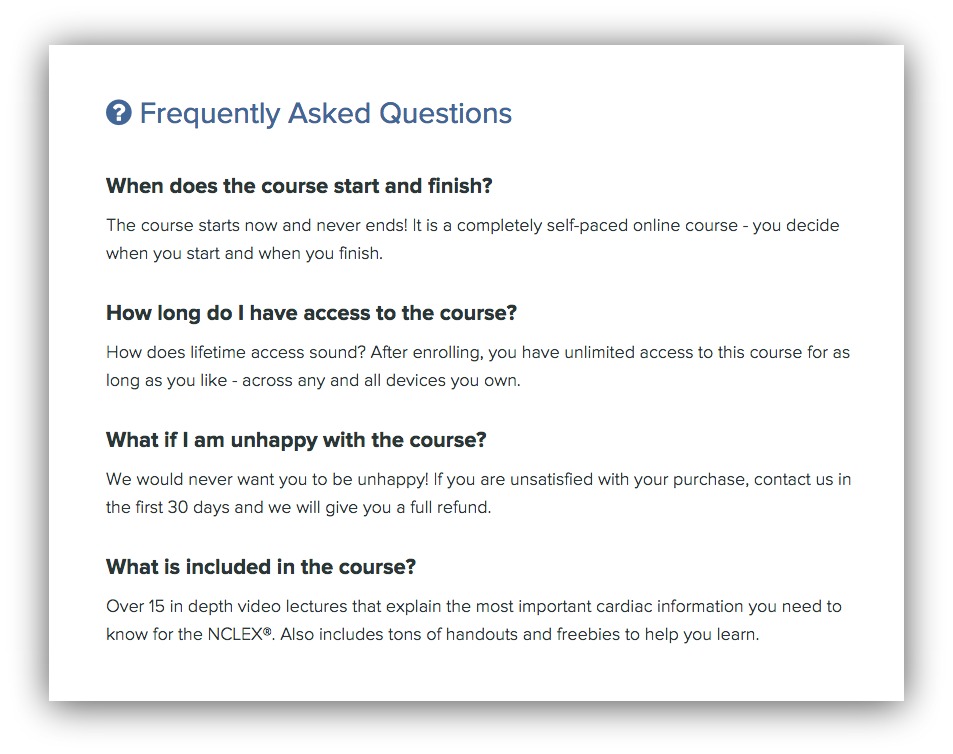

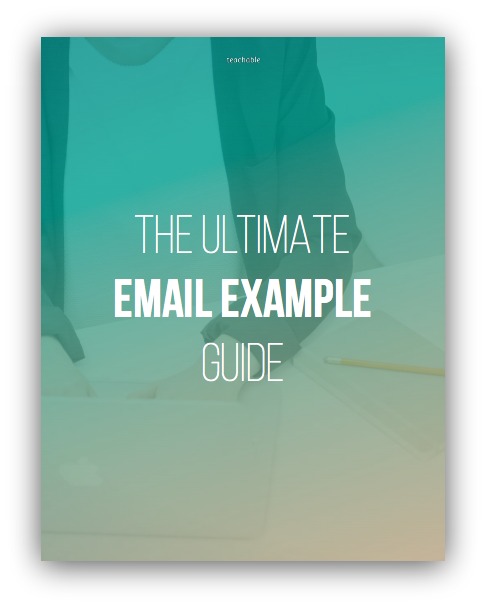
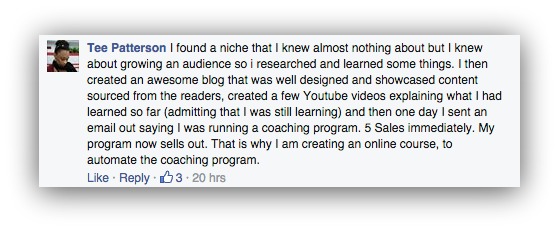
Comments